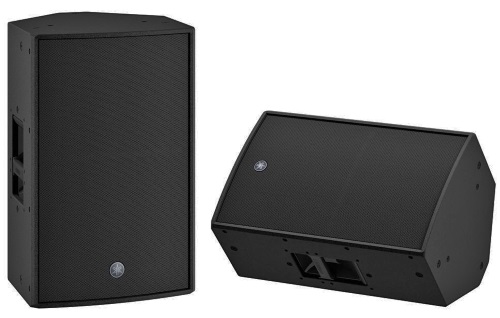Exceptional versatility is a hallmark of compact loudspeakers; not only do they serve as mains in smaller applications and as stage monitors, but they also lend themselves to front fill and other supplementary duties in larger situations. Most are quite portable yet they can also be utilized with great results in installed systems as well.
Many models now include onboard amplifiers with sophisticated DSP, although a significant number are also offered in passive versions. “Automatic” features can include signal delay to align the acoustic centers of each driver, phase correction, equalization, and driver protection. An increasing number of units offer selectable presets for different applications such as main or monitor placement, vocal or music sources, and high-pass filtering for use with subwoofers.
Increased EQ control is yet another addition to some feature sets, as is rudimentary mixing capability. And networking has certainly arrived in this genre, with more models now accepting (Audinate) Dante digital audio input while the AVB (Audio Video Bridging) network protocol is also now starting to arrive on the scene. Speaking of connectivity, let’s not overlook the fact that many models also include Bluetooth capability.
High-frequency horns are frequently rotatable, while more powerful compression drivers deliver greater power handling capacity. Models with smaller cone drivers that are still capable of exceptional output are a trend, as are different driver configurations. Several models are coaxial, another trend in this genre.
All generally share similar dimensions, with a range of 22 to 30 inches in height and weight spanning from 20 to 75 pounds (some a few pounds less or more). Most have a pole-mount socket and handles, and some offer rigging options along with a cabinet angle for stage monitoring.

It’s been a couple of years since we’ve tracked portable 2-way loudspeakers, so let’s take a look at the most recent models to find out the latest of what’s available in terms of capabilities, feature sets and options.
The L-Acoustics Syva is a co-linear design utilizing six medium-frequency and three high-frequency transducers in a J-shaped progressive curvature format. The transducer arrangement, called segment source, produces a 140 (h) x 26 (v) degrees (+5/-21 degrees) directivity pattern that is stated to be optimized for surface coverage and 115 feet of throw.
The companion Syva Low enclosure (dual 12-inch cones) is designed to provide low-frequency contour and extended bandwidth down to 40 Hz, with Syva Sub (single 12-inch) extending bandwidth down to 27 Hz. One LA4X amplified controller can drive up to four enclosures. Syva can be wall- or pole-mounted, as well as flown or used alone with its baseplate, and it can also be mounted on top of Syva Low or Syva Sub using the AutoConnect audio and physical link.
The brand-new Adamson CS7p is a two-way loudspeaker utilizing the company’s proprietary network platform, employing a redundant AVB scheme with the ability to daisy-chain networked audio between multiple sources, accompanied by an analog XLR input and output. There’s also onboard amplification and DSP, with all parameters monitored and controlled via proprietary software.
The CS7p contains dual 7-inch Kevlar neodymium transducers and a 3-inch compression driver feeding a 70- x 40-degree waveguide, rotatable by 90 degrees. The dipole arrangement of the cabinet is designed to produce a stable polar response, meaning the CS7p can be paired to increase horizontal coverage and overall output. The cabinet construction uses marine grade Birch plywood as well as aircraft-grade steel and aluminum, with the rigging system offering a variety of options.
Hitting the market just a couple of months ago, QSC CP Series powered loudspeakers are available in 8- (CP8) and 12-inch (CP12) versions, both with a 1.4-inch compression driver.
The components are driven by a class D amplifier stated to deliver peak power of 800 watts (LF) and 200 watts (HF). Preset DSP contours are provided for the most common applications, and line, mic/line and 3.5 mm stereo inputs are also onboard.
Both models include a stage monitor angle and can be pole-mounted. Proprietary Intrinsic Correction in the DSP is designed to enhance sonic performance and driver protection, while Directivity Matched Transition (DMT) is intended to produce consistent frequency response across the entire coverage area.















